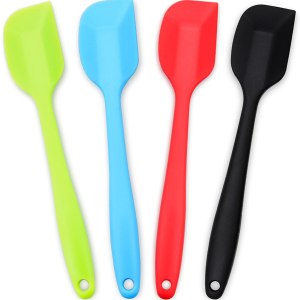I’ve always been a fan of cheesecake. It’s creamy, rich, and oh so delicious. But when I discovered Biscoff cookies and spread, my love for cheesecake was taken to a whole new level. The sweet and slightly spiced flavor of Biscoff cookies combined with the creamy texture of cheesecake is simply irresistible. In this post, I’ll share my recipe for Biscoff cheesecake and some tips to help you achieve the perfect texture and taste.

Biscoff and cookie butter
First, let’s talk about Biscoff. If you’re not familiar with it, Biscoff is a type of speculoos cookie that originated in Belgium. And what is a speculoos cookie, you say? Speculoos (or speculaas) is a spiced shortcrust biscuit traditionally baked for St. Nicholas Day in the Netherlands, Belgium, and Luxembourg. The spices commonly used in speculoos are: cinnamon, nutmeg, cloves, ginger, cardamom, and white pepper. Biscoff spread is a creamy cookie butter spread made from the crushed cookies. If you can’t find Biscoff cookies or spread, you can substitute any speculoos cookies or cookie butter spread of your choice.
Want another recipe using Biscoff? Try my double cookie butter chunk ice cream!
Making the crust
Now, let’s get into this cookie butter cheesecake recipe. The crust is made from crushed Biscoff cookies and melted butter. To make the crust, you can use a food processor to crush the cookies into fine crumbs, or put them in a Ziploc bag and use a rolling pin to crush them. Mix the crumbs with melted butter and press the mixture into a greased 9-inch springform pan. I personally like to line the bottom of my springform pan with parchment too, but you don’t have to do this extra step if you don’t want to.
Bake the crust in the oven for 10 minutes and set it aside to cool.
Making the filling
Next, let’s talk about the filling. The key to achieving the perfect texture for cheesecake is to use room temperature ingredients and not overbeat the mixture. Make sure to use a paddle attachment when you mix the ingredients — this will prevent incorporating too much air into the batter. I typically keep the speed on my KitchenAid stand mixer at medium or 4. Too much air can cause the cheesecake to crack during baking, and we don’t want that.
In a stand mixer with a paddle attachment, beat the softened cream cheese for about 3 minutes on medium speed. Add sugar, sour cream, Biscoff spread, cornstarch, salt, and vanilla extract, and mix until everything is fully incorporated. Add the eggs one at a time, mixing everything first after each egg is added until the batter becomes more homogenous.

Baking the cheesecake in a bain marie
When baking delicate dished like custards and cheesecakes, I highly recommend using a bain marie or a water bath. It helps to distribute heat evenly and prevent the cheesecake from cracking. To set up a bain marie, wrap the outside sides and bottom of the springform pan in two to three layers of aluminum foil, basically creating a barrier. This is to help avoid getting water (from the bain marie) through the springform pan seams into your batter. Place your batter-filled springform pan into a roasting pan or a baking dish deep and wide enough to fit. Slowly but surely, pour boiling water into that larger pan until there’s about an inch of water around the outside of your springform pan. Place the whole ensemble into the oven and bake for 1 hour.
Once the hour is up, turn off the oven. Then, leave the cheesecake there for another 1 hour with the oven door closed. After that, take it out of the oven, remove the springform pan from the bigger pan, and carefully remove the foil around it. Let it cool to room temp.
Topping, chilling, and serving
You can top off your cheeesecake however you like. For this recipe, I just used melted Biscoff spread and poured that evenly on top of the room temp cheesecake prior to chilling. Additionally, you can put either crushed or whole Biscoff cookies on top of the melted spread for some extra crunch and texture.
When it comes to serving and enjoying your Biscoff cheesecake, there are a few things to keep in mind.
First, once your cheesecake is in room temp and you’ve added your favorite toppings, be sure to refrigerate it for at least 6 hours before serving. Overnight is even better, as it allows the flavors to fully develop and the cheesecake to set properly. Plus, cold cheesecake is delicious!
In terms of pairing, there are a few beverages that would complement the rich flavors of the Biscoff cheesecake. A cup of coffee or tea would be a classic choice, as the bitterness can balance out the sweetness of the cheesecake. If you’re feeling more indulgent, a glass of milk or a scoop of vanilla ice cream would also be delicious.
No matter how you choose to enjoy it, this Biscoff cheesecake is sure to be a hit with anyone who tries it. So go ahead, treat yourself to a slice (or two) and savor the creamy, cookie butter goodness!

Tools you’ll need

Ingredients
Crust
- 35-40 Biscoff biscuits (or any speculoos cookies of your choice)
- 6 tbsp unsalted butter, melted
Filling:
- 24 oz (3 bars) cream cheese, softened and room temp
- 1/2 cups + 2 tbsp sugar
- 3/4 cups sour cream, room temp
- 3/4 cups Biscoff spread*, room temp
- 3 eggs, room temp
- 1.5 tbsp cornstarch
- 1 tsp vanilla extract
- 1/4 tsp salt
Topping:
- 1/4 cup Biscoff spread*, melted
- crushed Biscoff cookies (optional)
Instructions
- Preheat your oven to 350 degrees F.
- In a food processor, crush the Biscoff cookies into fine crumbs for the crust. If you don't have a food processor, you can also put the cookies in a Ziploc bag and use a rolling pin or something similar to crush the cookies. Pour in a small bowl, add the melted butter, and mix together until the butter is coating all the crumbs.
- Pour and press the crust mixture into a greased 9-inch springform pan. I like to line the bottom of my pan with parchment paper, but you don't have to do that. As long as your pan is sufficiently greased (bottom and all around the sides inside), you're good. Bake in the oven for 10 minutes. After baking set aside to cool a bit.
- In a stand mixer with a paddle attachment, beat the softened cream cheese for about 3 minutes on medium speed (this is 4 on KitchenAid mixer). You don't want it beating too fast because you don't want to incorporate air into it because your cheesecake will crack. Meanwhile, start boiling about 6 cups of water for the bain marie (water bath).
- Add the sugar and beat for another minute or two. You may need to occasionally scrape the sides of your mixing bowl with a silicone spatula. Add the room temp sour cream and beat again for a minute. Then, add the Biscoff spread, cornstarch, salt and vanilla extract and mix until the Biscoff spread is fully incorporated. Add the eggs one at a time, mixing everything first after each egg is added until the batter becomes more homogenous.
- Wrap the outside sides and bottom of the springform pan in two to three layers of aluminum foil, basically creating a barrier. This is to help avoid getting water (from the bain marie) through the springform pan seams into your batter. Then, carefully pour your batter into the springform pan. Lightly shake and tap the pan onto the counter to even out the mixture and to get rid of potential air bubbles.
- Place your batter-filled springform pan into a roasting pan, or a baking dish deep and wide enough to fit. Carefully pour boiling water into that larger pan until there's about an inch of water around the outside of your springform pan. Place the whole ensemble into the oven and bake for 1 hour.
- Once the hour is up, turn off the oven. Then, leave the cheesecake there for another 1 hour with the oven door closed. Once that hour is done, take it out of the oven, remove the springform pan from the bigger pan, and carefully remove the foil around it. Let it cool to room temp.
- Pour the melted Biscoff spread evenly on top of the cheesecake. If you opted for the optional crushed Biscoff cookies for the topping, you can add those on top of the melted Biscoff spread. Then, refrigerate it for at least 6 hours. I'd recommend chilling it overnight, but if you're really impatient, 6 hours would suffice.
- Serve and enjoy!
Notes
* You can use either the smoothy or crunchy Biscoff spread. I actually used the crunchy one. Alternatively, you can use any cookie butter or speculoos spread of your choice.


// ON THE SCENE
- Back backdrop: Replica Surfaces — Concrete
- Bottom backdrop: Replica Surfaces — Cement
- Props: linen towel





